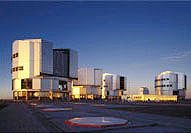Science Users Information
These pages are aimed at ESO community astronomers and contain all the information required in order to prepare, execute, process and exploit observations with ESO facilities. They also provide information on the scientific activities taking place at ESO. Details can be accessed via the navigation menu.
ESO Science Announcements
Message from the Director General
Published: 17 Dec 2025ESO Summer Research Programme 2026
Published: 16 Dec 2025MOSAIC: Signature of the Agreement for Construction
Published: 12 Dec 2025The Messenger
The Messenger 195 is now available. Highlights include:
- Brinchmann, J., Barcons, X. et al.: Expanding Horizons: Transforming Astronomy in the 2040s
- Brinchmann, J., Leibundgut, B. et al.: ESO Facilities in the 2030s
- Catinella, B., Cortese, L. et al.: Multiphase Astrophysics to Unveil the Virgo Environment (MAUVE)
The ESO Science Newsletter
The December 2025 issue is now available.
The ESO Science Newsletter, mailed approximately once per month, presents the most recent announcements. Subscription is controlled through the Manage Profile link on the User Portal. Back issues (2013-) are archived.
Citing ESO data in research papers
Researchers are kindly asked to indicate the identifiers (programme IDs or Data DOIs) of the (new or archival) observations they used in their papers as explained in ESO’s data citation policy. This enables the telbib curators to cross-link research output to make data Findabie, Accessible, Interoperable, and Reusable as suggested by the FAIR Principles.
Pitch Your Research to ESO COMM
Are you an author on an upcoming scientific study based on ESO data that could be relevant to journalists or the wider public? Or are you a Principal Investigator on ESO observations with potential to become stunning images? If so, please consider sending to ESO your paper and/or a preview of the image(s) obtained with ESO telescopes.

 RSS
RSS


